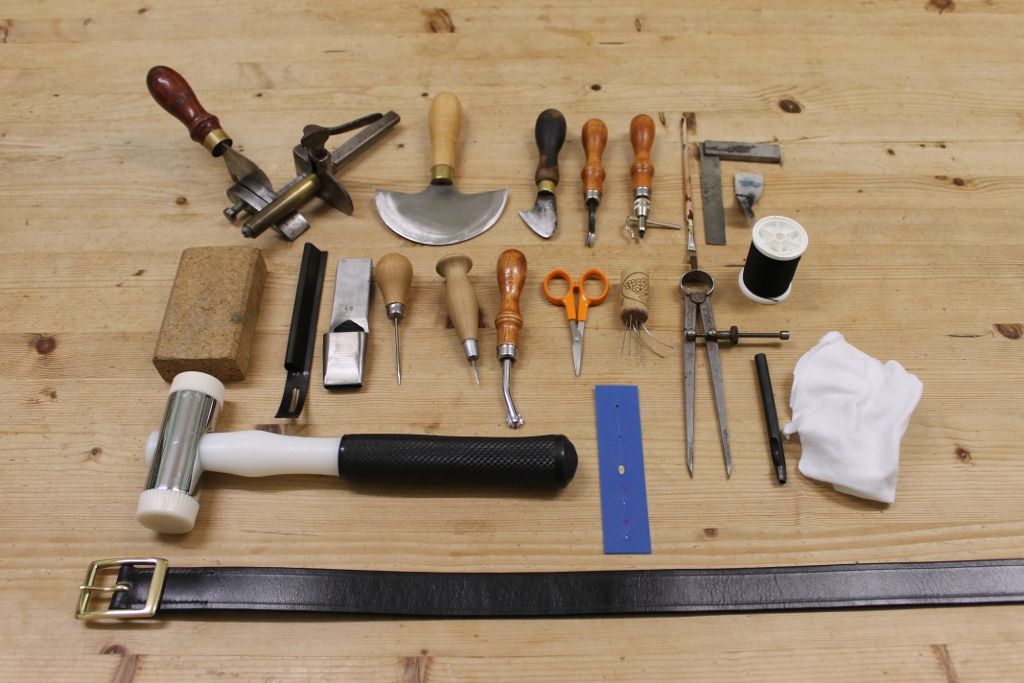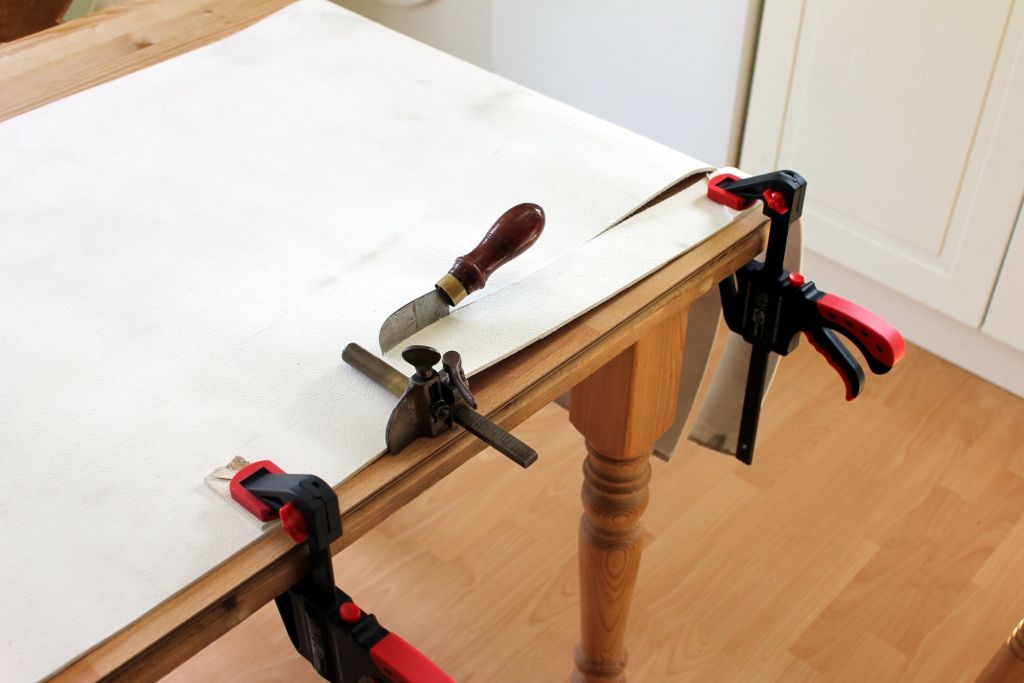Having just finished another of my oak-bark tanned bridle leather belts, I thought it might be interesting to have a look at all the tools used in making a belt.
The belt is black, 1.25" wide, made from Baker's traditionally tanned bridle leather, 3.5-4mm thick, with a solid brass buckle. The belt is kept nice and simple, with the edges bevelled, dyed and burnished, and a single edge crease applied to add a small amount of decoration. With leather of this quality, you don't need to add anything more, as the leather speaks for itself. The buckle is hand stitched using waxed linen thread.

And here are all the tools used in making the belt (excluding bottles of dyes and finishes). Of course, you don't need all of these to make a belt, but they are what I have built up over time as the most effective ones to give a good end result.

Thanks for looking.
Geoff
The belt is black, 1.25" wide, made from Baker's traditionally tanned bridle leather, 3.5-4mm thick, with a solid brass buckle. The belt is kept nice and simple, with the edges bevelled, dyed and burnished, and a single edge crease applied to add a small amount of decoration. With leather of this quality, you don't need to add anything more, as the leather speaks for itself. The buckle is hand stitched using waxed linen thread.

And here are all the tools used in making the belt (excluding bottles of dyes and finishes). Of course, you don't need all of these to make a belt, but they are what I have built up over time as the most effective ones to give a good end result.

Thanks for looking.
Geoff



